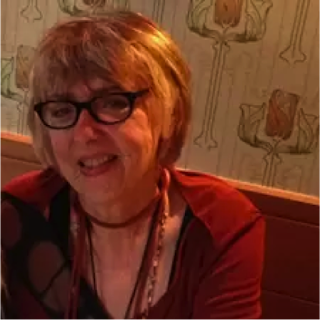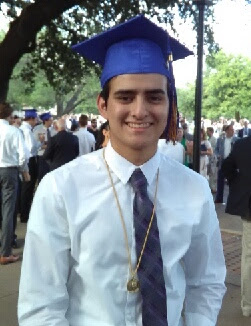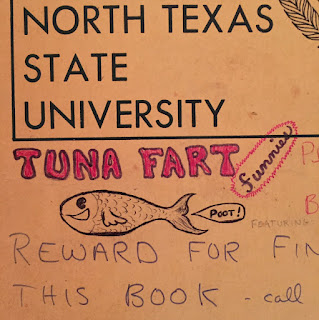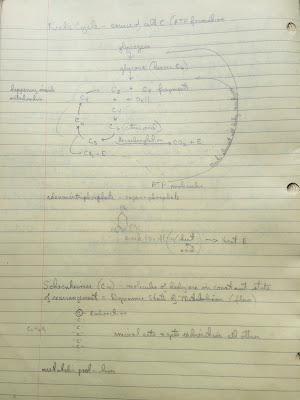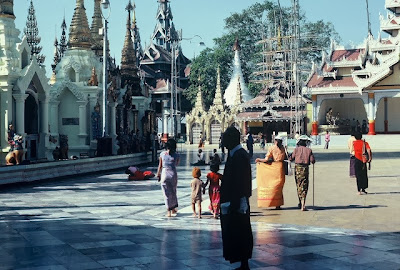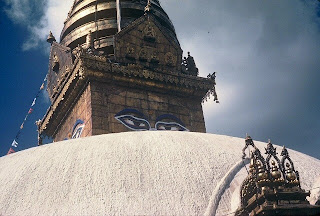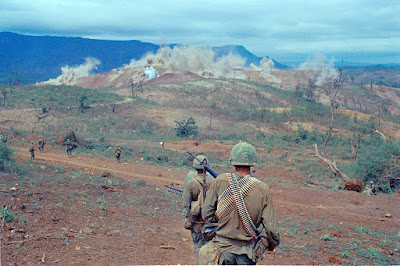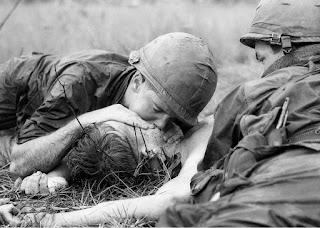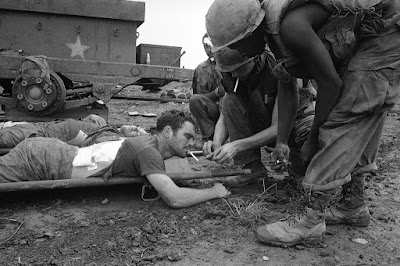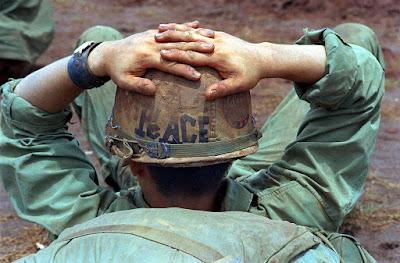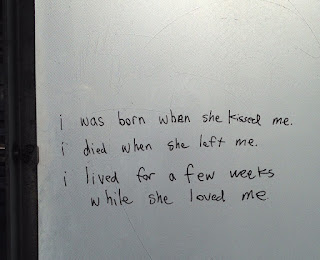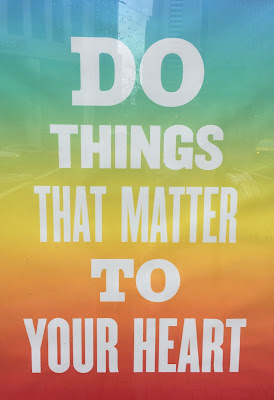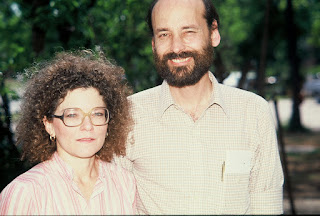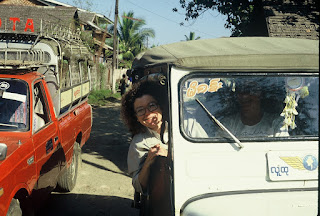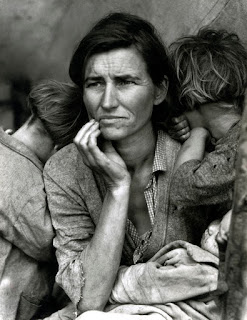Curriculum vitae Charles Kemp
- FNP-C, Baylor University
- CRNH, Certification in Hospice & Palliative Nursing (expired 2002)
- M.S.N., University of Texas at Austin
- B.S.N., Baylor University (magna cum laude)
- Senior lecturer and clinical instructor, Louise Herrington School of Nursing, Baylor University. Classroom and clinical courses include community health, physical assessment, psychiatric nursing, hospice care, communications, nursing fundamentals, and RN bridge course. Also see Community Development and Scholarship sections. 1989-present (senior lecturer May 2000). Retired.
- Family nurse practitioner (volunteer), Agape Clinic. Provide primary health care for underserved patients in inner-city setting and coordinate clinic services. 2000-present. Retired.
- Development Consultant, self-employed. Services included agency and board development, planning, research, grant-writing, education, related activities. $1,000,000+ in grants awarded in twelve months. 1988-89.
- Lecturer and Clinical Instructor, Texas Woman’s University. Courses included community health, psychiatric nursing, hospice care, nursing fundamentals. 198l-88.
- Volunteer in various roles with hospice patients, refugees and immigrants, children who were abused, and other people and situations. 1978-2016.
- Hospice Director (founding); Clinical Specialist, Visiting Nurse Association of Dallas. Responsibilities included carrying out the base community assessment; planning all administrative, clinical, and educational aspects of the hospice program; implementing the program; and evaluating the program. Also provided patient care and community education. Please see grants section of c.v. 1978-81.
- Supervisor, V.N.A. Responsibilities included clinical and administrative supervision of professional staff. 1976.
- Staff Nurse, V.N.A. Responsibilities included patient assessments and care; clinical supervision of non-professional staff. 1975-76.
- Other employment: While employed at T.W.U., worked during summers as Director of the Dallas-Fort Worth Refugee Interagency (twice), and as Hospice Staff Nurse.
- (2006) with T.S. Kwan-Gett & C. Kovarik. Infectious and Tropical Diseases: A Handbook for Primary Care. Philadelphia: Elsevier Science. Available at Amazon, B&N, & Elsevier.
- (2004) with L. Rasbridge. Refugee and Immigrant Health. Cambridge: Cambridge University Press. Amazon, B&N, & Cambridge.
- (1999). Terminal Illness: A Guide to Nursing Care (2nd ed.). Philadelphia: Lippincott-Williams & Wilkins.
- (1999) with L. Rasbridge. Refugee and Immigrant Health (A manual). Austin: Texas Department of Health.
- (1995). Terminal Illness: A Guide to Nursing Care. Philadelphia: J.B. Lippincott.
- (2007). with J. Dailey & J. Smith. Burma Refugees. Available http://agapeclinic.googlepages.com/burma_refugees
- (2001-2005). Agape Clinic/Baylor Community Care. Available online: http://www3.baylor.edu/~Charles_Kemp/agape.htm
- (2000-2005). Terminal Illness: A Guide for Patients and Families. Available online: http://www.baylor.edu/~Charles_Kemp/terminal_illness/Terminal_Illness.htm (Sponsor: Louise Herrington School of Nursing at Baylor University)
- (2000-2004). Infectious Diseases of Refugees and Immigrants. Available online: http://www.baylor.edu/~Charles_Kemp/Infectious_Disease.htm (Sponsor: Texas Department of Health)
- (1999-2005). with L. Rasbridge. Refugee Health. Available online http://www.baylor.edu/~Charles_Kemp/refugee_health.htm (Sponsor: Texas Department of Health)
- (1998-2001). with L. Rasbridge. Asian Health. Available online http://www.baylor.edu/~Charles_Kemp/asian_health.html (Sponsor: U.S. Department of Health and Human Services, Office of Minority Health)
- (in press). Promoting healthy partnerships with refugees and immigrants. In E.T. Anderson and J. MacFarlane (Eds.), Community as Partner (5th ed.). Philadelphia: Lippincott, Williams & Wilkins. Revised from previous editions in 2004, 2000, & 1996.
- (2007). Culture and spiritual care at the end-of-life. In K. Kuebler (Ed.), Palliative and End-of-Life Care Textbook for Advanced Practice Nurses (2nd ed.). Philadelphia: Elsevier.
- (2006) Spiritual care in terminal illness. In B. Ferrell and N. Coyle (Eds.) Oxford Textbook of Palliative Nursing (2nd ed., pp. 595-604). New York: Oxford University Press.
- (2006). Anorexia and cachexia. In B. Ferrell and N. Coyle (Eds.) Oxford Textbook of Palliative Nursing (2nd ed., pp. 169-176). New York: Oxford University Press.
- (2004). Six stories in S. Hudacek (Ed.), Making a difference: Stories from the Point of Care, Vol II. Indianapolis: Signma Theta Tau.
- (2004). Promoting healthy partnerships with refugees and immigrants. In E.T. Anderson and J. MacFarlane (Eds.), Community as Partner (4th ed.). Philadelphia: Lippincott, Williams & Wilkins. Revised from previous editions in 2000 & 1996.
- (2004). Grief and loss. In K.M. Fortinash & P.A. Holoday-Worret (Eds.), Psychiatric Mental Health Nursing (4th ed.). St. Louis: Mosby. Revised from 1-2 editions in 2000 & 1996.
- (2001) Spiritual care in terminal illness. In B. Ferrell and N. Coyle (Eds.) Oxford Textbook of Palliative Nursing. New York: Oxford University Press.
- (2001) Cachexia and anorexia. In B. Ferrell and N. Coyle (Eds.) Oxford Textbook of Palliative Nursing. New York: Oxford University Press.
- (2000) Refugee and immigrant health in community nursing. In E.T. Anderson and J. MacFarlane (Eds.), Community as Partner (2nd edition). Philadelphia: Lippincott, Williams & Wilkins.
- (1997) with G. Davis and P. Thai. The Baylor Community Care Program. In S.D. Seifer and K.M. Connors (Eds.), A Guide for Developing Community-Responsive Models in Health Professions Education. San Francisco: Community-Campus Partnerships for Health.
- (1996) with G. Mallon-Frank. Grief. In K. Fortinash and P. Holoday-Worret (Eds.), Psychiatric-Mental Health Nursing. St. Louis, MO: C.V. Mosby.
- (1996) Refugee health and community nursing. In E.T. Anderson and J. MacFarlane (Eds.),Community as Partner. Philadelphia: J.B. Lippincott.
- (1986) Cambodian refugee health project. In Community Based Nursing Services: Innovative Models (pp. 12-16). Kansas City, MO: American Nurses Association.
- (2005). Living as a refugee. Health Messenger, 28, 2-11 (extracted from the mental health chapter in Refugee & Immigrant Health). I am proud that this work was selected by the editorial committee of Health Messenger and the Mae Sot Clinic, which serves Burmese refugees on the Thai-Burma border. The article is in Burmese and English.
- (2005). Cultural issues in palliative care. Seminars in Oncology Nursing, 21, 44-52.
- (2003). Community health nursing: Where we are going and how to get there. Nursing Education Perspective, 24, 144-150.
- (2002). with S. Bhungalia. Culture and the end of life: Major world religions. Journal of Hospice and Palliative Nursing, 4(4).
- (2002). with B-J Chang. Culture and the end of life: Chinese. Journal of Hospice and Palliative Nursing, 4(3), 174-180.
- (2002). with A. Roberts. Infectious diseases of refugees and immigrants: Hookworm. Journal of the American Academy of Nurse Practitioners, 14(5), 194.
- (2002). with D. Henry. Culture and the end of life: Nigerians. Journal of Hospice and Palliative Nursing, 4(2), 111-115.
- (2002) with A. Roberts. Infectious diseases of refugees and immigrants: Viral hemorrhagic fevers. Journal of the American Academy of Nurse Practitioners, 14(4), 146-149.
- (2002). with S. Bhungalia. Culture and the end of life: (Asian) Indian health beliefs and practices related to the end of life. Journal of Hospice and Palliative Nursing, 4(1), 54-58.
- (2001). with L. Rasbridge. Culture and the end of life: East African cultures-Part II, Sudan.Journal of Hospice and Palliative Nursing, 3(4), 110-112.
- (2001) with A. Roberts. Infectious diseases of refugees and immigrants: Giardiasis. Journal of the American Academy of Nurse Practitioners, 13(12), 532-533.
- (2001). with L. Rasbridge. Culture and the end of life: East African cultures-Part I, Somalia.Journal of Hospice and Palliative Nursing, 3(3), 59-61.
- (2001). Bioterrorism: Introduction and major agents. Journal of the American Academy of Nurse Practitioners, 13(11), 483-491.
- (2001) with A. Roberts. Infectious diseases of refugees and immigrants: Filariasis. Journal of the American Academy of Nurse Practitioners, 13(9), 391-394.
- (2001) with A. Roberts. Infectious diseases of refugees and immigrants: Echinococcosis (hydatid disease). Journal of the American Academy of Nurse Practitioners, 13(8), 346-347.
- (2001). with L. Rasbridge. Culture and the end of life: East African cultures-Part I, Sudan.Journal of Hospice and Palliative Nursing, 3(3), 110-112.
- (2001) with A. Roberts. Infectious diseases of refugees and immigrants: Ebola and Marburg hemorrhagic fevers. Journal of the American Academy of Nurse Practitioners, 13(7), 291-292.
- (2001) with A. Roberts. Infectious diseases of refugees and immigrants: Dengue fever. Journal of the American Academy of Nurse Practitioners, 13(6), 243-245.
- (2001) with A. Roberts. Infectious diseases of refugees and immigrants: Chagas’ disease.Journal of the American Academy of Nurse Practitioners, 13(4), 152-153.
- (2001) with A. Roberts. Infectious diseases of refugees and immigrants: Brucellosis. Journal of the American Academy of Nurse Practitioners, 13(3), 106-107.
- (2001). with L. Rasbridge. Culture and the end of life: East African cultures-Part I, Somali.Journal of Hospice and Palliative Nursing, 3(2), 59-61.
- (2001) with A. Roberts. Infectious diseases of refugees and immigrants: Ascaraisis. Journal of the American Academy of Nurse Practitioners, 13(2), 55-56.
- (2001) with A. Roberts. Infectious diseases of refugees and immigrants: Amebiasis. Journal of the American Academy of Nurse Practitioners, 13(1), 8-9.
- (2001) with A. Roberts. Infectious diseases of refugees and immigrants: Introduction. Journal of the American Academy of Nurse Practitioners, 13(1), 7-8.
- (2001). Culture and the end of life: Hispanic cultures (Mexican-Americans). Journal of Hospice and Palliative Nursing, 3(1), 29-33.
- (2000) with L. Keovilay & L. Rasbridge. Culture and the end of life: Cambodians and Laotians – Health beliefs and practices related to the end of life. Journal of Hospice and Palliative Nursing, 2(4), 143-151.
- (2000) with A. Dinh & L. Rasbridge. Culture and the end of life: Introduction (to a series) and Vietnamese health beliefs and practices related to the end of life. Journal of Hospice and Palliative Nursing, 2(3), 109-117.
- (1999). Metastatic spread and common symptoms: Pancreatic, prostate, stomach, and uterine cancers. American Journal of Hospice and Palliative Care, 16(5), 664-672.
- (1999). Metastatic spread and common symptoms: Non-Hodgkin’s lymphoma, oral cavity, and ovarian cancers. American Journal of Hospice and Palliative Care, 16(4), 607-615.
- (1999). Metastatic spread and common symptoms: Lung cancer, melanoma, and multiple myeloma. American Journal of Hospice and Palliative Care, 16(3), 533-540.
- (1999). Metastatic spread and common symptoms: Renal cancer, leukemia, and hepatic cancer.American Journal of Hospice and Palliative Care, 16(2), 479-486.
- (1999). Metastatic spread and common symptoms: Breast cancer, colorectal cancer, and esophageal cancer. American Journal of Hospice and Palliative Care, 16(1), 403-411.
- (1999). Nguyen v. The State. The Forensic Echo, III(4), 2-3.
- (1998) with L. Keovilay. Laotian health care beliefs and practices. Lao Vision, 2(1), 24-26.
- (1998). Metastatic spread and common symptoms: Introduction, bladder cancer, and brain cancer. American Journal of Hospice and Palliative Care, 15(6), 355-360.
- (1997). Palliative care for respiratory problems in terminal illness. American Journal of Hospice and Palliative Care, 14(1), 26-30.
- (1996) with S. Bailey, P. Bennett, J. Hicks, and S.H. Warren. Cancer detection activities coordinated by nursing students in community health. Cancer Nursing, 19(5), 348-352.
- (1996). Managing chronic pain in patients with advanced disease and substance-related disorders. Home Healthcare Nurse, 14(4), 255-263.
- (1996) Islamic cultures: Health care beliefs and practices. American Journal of Health Behavior,20(3), 19-25.
- (1995) with L. Stepp. Palliative care for patients with acquired immunodeficiency disorder.American Journal of Hospice and Palliative Care, November/December, 14-29.
- (1994). Spiritual care in terminal illness: Practical applications. American Journal of Hospice and Palliative Care, September/October, 31-36.
- (1994) Community health clinical experiences: The primary care setting. Public Health Nursing, 11(1), 2-6.
- (1994) with M. McEwen. Teaching strategies for operationalizing nursing’s agenda for health care reform. Nurse Educator, 19(1), 10-13.
- (1993) with R. Bowie, G.K. Cooper, and J. Lothrop. Preparing for death: A Christian guide for individuals and families. Dallas: First Presbyterian Church.
- (1993). Health services for refugees in countries of second asylum. International Nursing Review, 40(1), 21-24.
- (1991). Writing successful grant proposals for services to clients. Nurse Practitioner, 16(11), 51-56.
- (1987) with J.N. Walterspiel and J.R. Rogers. Coin rubbing and acute phase reactants. (letter)Australian Pediatric Journal, 23(12), 309-310.
- (1987) with P. Drapo and C. Patrick. Addressing the needs of underserved populations. Public Health Nursing, 4(4). 231-236.
- (1987). Basic counseling skills: the refugee client. Summary of Proceedings from the Conference on Refugees and Mental Health. Texas Department of Mental Health and Mental Retardation, Austin, Texas.
- (1985). Cambodian refugee health care beliefs and practices. Journal of Community Health Nursing, 2(1), 41-52.
- (1978). The dying process. Proceedings of the Sixth Annual Nursing Research Forum. Dallas: A. Webb Roberts Center.
- Papers (not including talks at various universities, hospitals, etc., e.g., UT Austin, UTSW Medical School, Baylor, NTSU, UT Arlington, TWU, BUMC, Parkland, Children’s, etc., etc.)
- (2007) with M. Abbe, N. Avila, J. Pham. Including immigrants, minorities, and refugees: Lessons learned from the Agape Clinic (invited paper). YMCA Expo 2007: Engaging Newcomers (national conference). Dallas, Texas.
- (2006) with L. Spies. Emerging infectious diseases. American Academy of Nurse Practitioners National Conference, Grapevine, Texas.
- (2006) with C. Kovarik. Agape: The development and sustenance of an inner-city mission clinic. American Academy of Nurse Practitioners National Conference, Grapevine, Texas.
- (2006) with M.A. Faucher. Beyond Sick Care: Strategies for Health Care in Primary Care for Immigrants & Refugees. National Primary Care for the Underserved Conference, Philadelphia.
- (2006). Infectious diseases in patients from Latin America. National Primary Care for the Underserved Conference, Philadelphia.
- (2006). Refugee and immigrant health: Current issues. Resettlement Conference. Phoenix.
- (2004). Culture & the End-of Life: Selected Issues. Web presentation. Hospice & Palliative Nurses Association.
- (2003). Community Health Nursing Education: Leadership and Development Roles. American Public Health Association Annual Meeting, San Francisco.
- (2001) with A. Pappas. CHN Education: A Path to the Future (Operationalizing AACN’s Position Statement on Nursing Education). American Association of Colleges of Nursing Baccalaureate Education 2001 Conference, Washington, DC.
- (2000) with D. Gurica. District health: A model for community health service and education. American Public Health Association Annual Meeting, Boston.
- (2000). Infectious diseases of refugees and immigrants. Texas Department of Health Refugee Health Conference, Austin.
- (1999). The refugee health site: Development and use. Texas Department of Health Refugee Screening Conference, Dallas.
- (1998). Hospice care for Muslim patients and families. National Hospice Organization Annual Symposium, Dallas.
- (1998). with E. McKinnis. Lung cancer: Natural history and symptom management. National Hospice Organization Annual Symposium, Dallas.
- (1997). Cancer screening among Southeast Asian refugees: The role of students. Annual Meeting of the Oncology Nursing Society, San Francisco.
- (1996). Community Care: Nursing students providing district nursing services. Paper presented at Community Partnerships in Health Professions Education: A National Conference on Service-Learning, Boston, Massachusetts.
- (1996). Breast cancer screening among Southeast Asian refugees. Paper presented at the annual Susan G. Komen Foundation Affiliates Meeting, Dallas, Texas.
- (1995). Hospice: Current trends and implications for public health. Paper presented at the annual Texas Public Health Association Meeting, Austin, Texas.
- (1995). The community health clinical group as district nurse. Paper presented at the annual Texas Public Health Association Meeting, Austin, Texas.
- (1994). Community development. Paper presented at the annual Texas Public Health Association Meeting, Corpus Christi, Texas.
- (1994). Islam: Influences on health care beliefs and practices in Islamic cultures. Paper presented at the annual Texas Public Health Association Meeting, Corpus Christi, Texas.
- (1993). with S. Beasley, R.W. Bell, L.M. Duckworth, A Gibson, and J. Weese. Baccalaureate nursing students and Kurdish refugees in the U.S. Poster presented at the annual Global Health Conference, Galveston, Texas.
- (1992). with M. McEwen. Operationalizing ANA’s agenda for health care reform in a baccalaureate nursing program. Paper presented at the annual meeting of the American Public Health Association, Washington, D.C.
- (1991). Hospice care for Southeast Asian refugees. Paper presented at the annual meeting of the National Hospice Organization. Seattle, WA.
- (1990). Grants and power. Paper presented at the annual meeting of the National Nurses Society on Addictions, Dallas, Texas.
- (1990). Grants and the money to make dreams reality. Paper presented at the annual meeting of the National Association for Home Care, Dallas, Texas.
- (1987). Refugee psychosocial issues: The refugee pediatric oncology patient. Paper presented at the annual Children’s Medical Center/American Cancer Society Symposium on Pediatric Oncology Patients, Dallas, Texas.
- (1986). with S.J. Todd. Primary care for Cambodian Refugees. Paper presented at the Eleventh National Primary Care Nurse Practitioner Symposium, Denver, Colorado.
- (1985). Human needs and funding shortages: Program development strategies. Paper presented at the annual meeting of the American Public Health Association, Washington, D.C.
- (1985) An allied health professions response to refugee health problems. Paper presented at the annual meeting of the American Society of Allied Health Professions, Dallas, Texas.
- (1985). Community networking. Paper presented at the National Workshop of the Association of Junior Leagues, Irving, Texas.
- (1985). Infant mortality in Southeast Asian refugees. Paper presented at the Regional Conference of the U.S. Public Health Service, Dallas, Texas.
- (1984). Refugee and immigrant health. Paper presented at the annual Community Health Institute of the National Association of Community Health Centers, San Antonio, Texas.
- (1984). Building a hospice team. Paper presented at the annual meeting of the Texas Hospice Organization, Dallas, Texas.
- (1984). The TWU refugee health project. Poster presentation at the annual meeting of the American Nurses Association, Kansas City, Missouri.
- (1984). Family planning and health care for Cambodian refugees in the U.S.: an international perspective. Paper presented at the international meeting of the National Council on International Health, Washington, D.C.
- (1983). Cultural characteristics of Cambodian refugees. Paper presented at the annual meeting of the American Public Health Association, Washington, D.C.
- Community Care: District health services through Baylor University School of Nursing and community agencies. Services include community outreach, a primary care clinic, home care, lay health promoter training, social work, chaplaincy, and other services. The Agape Clinic is central to these efforts – see grants below.
- Vietnam Veterans Resource Center: a resource/service center for veterans of Vietnam.
- Welcome House: a “halfway house” for refugees arriving in the U.S.
- T.W.U. Refugee Health Project: a clinical for community health nursing course. This project was integrated with the Welcome House, Khmer Community Development Project, and East Dallas Health Coalition.
- East Dallas Health Coalition: a primary care community clinic. Many community organizations were involved. EDHC is now a multipurpose health center open seven days/week with primary care services for adults, pediatrics, women’s health services, dental care, and WIC.
- Khmer Community Development Project: a multi-purpose project to benefit Cambodian refugees. (National Council of Jewish Women project).
- V.N.A. Home Hospice: the first operational hospice program in Texas. This hospice had the largest average daily census in the U.S., and was designated a national demonstration project.
- Since 1982, averaged about 10 community conferences, workshops, or presentations per year for such organizations as Parkland, Children’s Medical Center, Dallas City and County Health Departments, Child Welfare, U.T. Southwestern, Dallas Police, MH/MR, and others.
- Funding for services and programs of the Agape Clinic, 2000-2006: Numerous private and public foundations, churches, and other entities.
- Funding for community health education, 2003-2004: Aetna Foundation.
- Funding for the salary of a lay health promoter, 2000, 2001, 2004: First Presbyterian Foundation.
- Medications, equipment, and supplies for Baylor Community Care, 1996-2000: First Presbyterian Church of Dallas.
- Funding to develop a web site on infectious diseases of refugees and immigrants, 1999-2000: Texas Department of Health. See web sites above for path/address.
- Funding to develop a Refugee Health web site, 1997-98: Texas Department of Health. Extended through 1999. See web sites above for path/address.
- Asthma equipment and services for underserved community patients (of the East Dallas Health Center), 1999: Communities Foundation.
- Education and services for Asian refugees, 1997-2000: U.S. Office of Minority Health.
- Funding for summer services (1996, 1997) through Baylor Community Care: Bob Smith Foundation, BUMC Foundation, private gifts.
- Equipment for Baylor Community Care, 1995: Communities Foundation.
- Alcohol/drug abuse prevention for homeless children, 1989-91: Office of Substance Abuse Prevention, 1989-1992.
- HIV prevention for IV drug abusers, 1989-91: Centers for Disease Control.
- Amerasian Project, 1989: InterAction (branch of U.S. Department of State).
- Vietnam Veterans Resource Center, 1988: Welcome Home Foundation.
- T.W.U. Refugee Health Project, 1987: City of Dallas.
- Welcome House, 1984: Hunt Alternatives Foundation.
- Welcome House, 1984-86: Highland Park United Methodist Church; other churches.
- Khmer Community Development Project, 1984-86: National Council of Jewish Women – funding and services of a volunteer coordinator (part of T.W.U. Refugee Health Project).
- Dallas-Fort Worth Refugee Interagency operating funds, 1983-86: Various churches.
- Dallas-Fort Worth Refugee Interagency operating funds, 1984-85: Church World Service.
- Community Family Planning Outreach, 1983: Anonymous foundation.
- East Dallas Health Coalition seed funding, 1982: Temple Emanu-El – funding + involvement of the Temple Emanu-El Social Action Committee in developing the East Dallas Health Coalition. This proposal was also used for successful proposals to Hillcrest, Hoblitzelle, Meadows, and other foundations.
- Hospice Services and Equipment, 1979: Dallas Junior League.
- Hospice Demonstration Project, 1979-82: U.S. Department of Health and Human Services.
- Hospice Services and Equipment for Indigent Patients, 1979-80: Several churches.
- Hospice Demonstration Project, 1978: Texas Department of Human Resources.
- Other grants: Consulted on or participated in the writing of a number of other successful proposals.
- Abner V. McCall Humanitarian Award – Baylor University, 2006
- Faculty Award for Excellence – Elsevier Science (national award), 2006
- Outstanding University Scholar, Baylor University, 2006
- Fellow in the American Academy of Nursing, 2002
- Margaret Stein Award for Outstanding Service in Community Health (national award), 1999
- Outstanding University Lecturer, Baylor University, 1997
- Outstanding Community Volunteer, DISD
- Outstanding Community Volunteer Award, DFW Vietnamese Community
- Golden Rule Award, J.C. Penney
- Presidential Citation, Vietnam Veterans of America
- Special Award for Service, D.I.S.D.
- Outstanding Volunteer, Volunteer Center/ARCO
- Other recognition from the Dallas Police Department, Dallas County Historical Society, D.I.S.D., Weed & Seed, Baylor, and State of Texas
- Magna cum laude graduate of Baylor University
- Alpha Chi
- Purple Heart Medal and other decorations, United States Marine Corps, Vietnam
- Work as a volunteer with individuals and families in hospice and in the refugee community since 1978
- Agape Clinic, founding member of governing board, vice chair, 2002-2003; chair, 2003-2005; volunteer, 2001-
- East Dallas Health Center, Chairman of Community Advisory Committee, 1998-1999; Vice Chair, 2001-2002
- Church Health Ministries, member of Community Advisory Board, 1997-2000
- Open Ring church school class of First Presbyterian Church of Dallas, President, 2001-2002; 1994-1995; Vice President, 1993-1994
- Turtle Creek Health (HIV services), President of (founding) governing board, 1994-1995
- Refugee Services of North-Central Texas, Executive Committee of Board of Directors, 1990-1994
- Planned Parenthood of Greater Dallas, Board of Directors, 1987-1989
- East Dallas Y.M.C.A., Advisory Board, 1988-1989
- East Dallas Health Coalition, (founding) Executive Committee of Board of Directors, 1983-1988
- Dallas-Fort Worth Refugee Interagency, Executive Committee of Board of Directors, 1984-1987; President of Board, 1986
- Dallas Refugee Council, Advisory Committee, 1984-1987
- Brookside Neighborhood Association, Board of Directors, 1983-1985; Vice President, 1990-1993
- Advisory or other non-governing participation in a variety of other organizations
